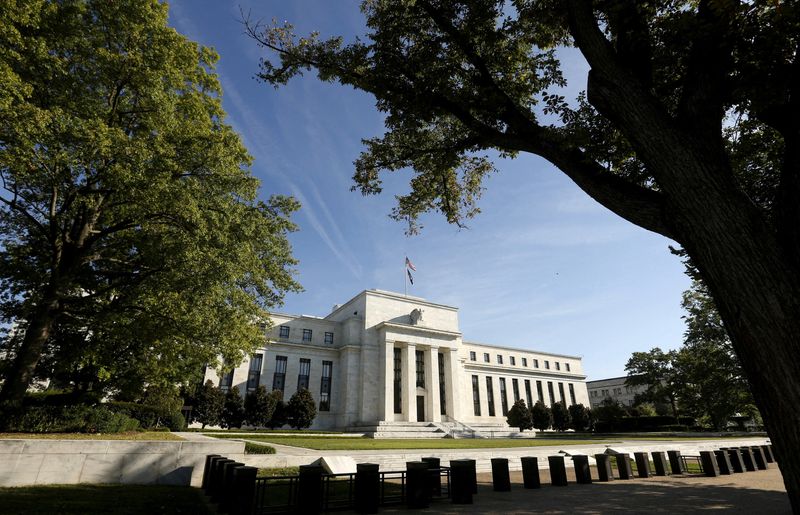By Jamie McGeever
ORLANDO, Florida (Reuters) – Even as traders bring forward the expected timing of the Federal Reserve’s first interest rate cut, the gap since the U.S. central bank’s last hike will probably be one of the longest on record.
Lengthy periods of economic and policy stability are surely preferable to the Fed regularly scrambling to cut rates only a few months after they have peaked, but they can foster complacency and leverage in financial markets.
Monetary policy doesn’t operate in isolation, and regulatory and fiscal policy influence investor behavior. But keeping rates on hold for longer risks narrowing the distribution of market expectations around growth, inflation and interest rates – essentially, complacency and groupthink creep in.
That’s more true when rates are kept lower for longer. But it’s also a risk when they plateau for an extended period – look at what followed the longest peak policy pause on record, between June 2006 and September 2007.
“Complacency leads to periods where distribution of market expectations narrows so much that when a shock comes, you can get blown out of the water,” says John Silvia, founder of Dynamic Economic Strategy.
There are no obvious signs of asset bubbles forming today similar to the U.S. housing market in the mid-2000s, but there is a growing optimism that the economy and markets will whether a prolonged period of peak cycle rates.
The Fed last raised rates in July, and current futures market pricing has the first cut coming next May – potentially a gap of 10 months, the second longest policy “pivot” from tightening to easing since the 1950s.
It would be significantly longer than the average gap of just three months over the last 18 cycles, almost double the average of 5.5 months since 1971, and still longer than the average of eight months seen over the past five cycles.
Of course, the Fed could move sooner if the deterioration in the economic data merits swifter recession-fighting action. Or, it may hold off for longer if the slowdown doesn’t seem too severe and inflation is not coming down as quickly as hoped.
MODELS
But there is a pattern forming that shows the pivot between the Fed’s last rate hike in the tightening cycle to the first cut in the easing cycle is lengthening.
This can be attributed to factors broadly rooted in the Great Moderation of the mid-1980s to the 2007-2009 Great Financial Crisis, the period marked by low and falling inflation, low market volatility, and longer economic expansions that reduced the need for “stop-start” monetary policy swings.
To be fair to central banks too, they have gotten better at their jobs, if keeping a lid on inflation is the yardstick.
Inflation targeting, more sophisticated financial markets, better and faster access to information, transparent central bank communications, and greater central bank autonomy should, in theory, help policymakers make more informed decisions.
Central bankers should therefore have a greater degree of flexibility which, in theory, makes them more proactive than reactive, and better equipped to set policy for the longer term.
Joe Lavorgna, chief U.S. economist at SMBC Nikko Securities America, says lengthening gaps between hiking and easing cycles only really matter to the extent that an economic “soft landing” is achieved and a nasty downturn is avoided.
If the Fed is not quickly reversing course as it has frequently done in the past, there is less chance of a “stop-go” economy. Certainly, the recession that many people called almost as soon as the Fed started raising rates has not yet materialized.
Every cycle is different. But perhaps the economy is more adaptable and less sensitive to interest rates today than it used to be, and maybe models that for decades guided the relationship between monetary policy and growth no longer apply as strongly.
If so, everyone from policymakers to investors is kind of flying blind.
“If the lags between tightening and easing are longer, it just makes it harder to predict things. Whenever the economy breaks, it moves faster than anybody thinks,” Lavorgna says.
(The opinions expressed here are those of the author, a columnist for Reuters.)
(By Jamie McGeever; Editing by Paul Simao)
